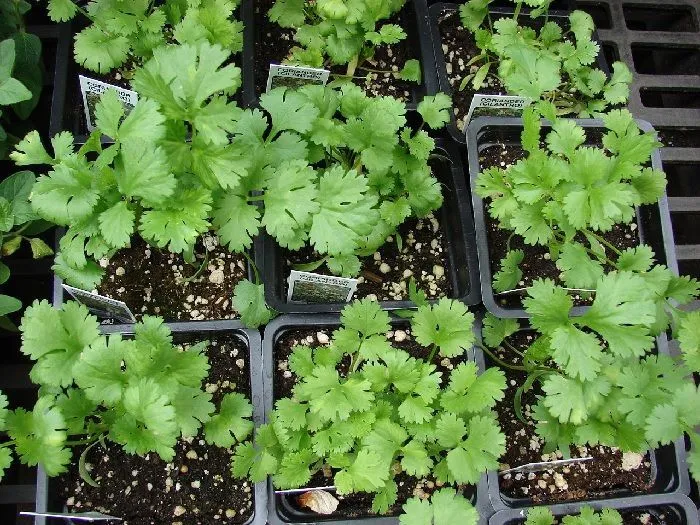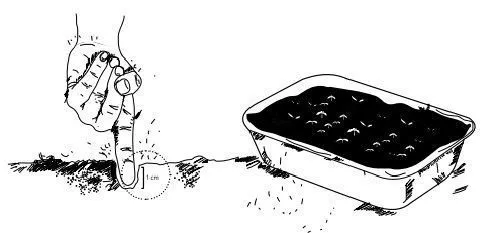We start this blog about medicinal and aromatic plants with coriander, an herb very present in world cuisine and that, curiously, blooms from the summer.
Coriandrum sativum enter dentr to the family of the umbellifers or apiaceae, and gender Coriandrum. It comes from the geographical area of the Middle East, the Mediterranean and some areas of Africa, although there are different opinions on the matter.
Even so, today it can be grown in many environments around the world, thanks to its great ability to adapt to different climatic conditions.
As for its size, it is usually around the 50 centimeters. Morphologically, the leaves of cilantro are very characteristic, and can sometimes be confused with those of parsley. The flowers, whitish in color, appear in summer and with the arrival of heat (between May and September, although it will depend on the hemisphere).
Table of Contents
Most commonly used parts of cilantro
In principle, any part of the plant is edible, but the parts that are most used for its aroma and other characteristics are its leaves and their seeds.
The leaves are used when they are still fresh. Instead, the seeds are left to dry. The use of cilantro as a medicinal and aromatic plant is very wide. Above all, in gastronomic terms, there is a notable difference in terms of the use of the parts of cilantro depending on the continent in which we are.
To give an example, the leaves are consumed fresh in American cuisine, especially Central and South America. Great mention has the guacamole of Mexico and the chillies of Chile when it comes to making spicy sauces typical of the area.
If we travel geographically over the Mediterranean (including North Africa) or the Asian continent we find that the dried seed is used more as a spice. Normally it is usually crushed when preparing seasonings, one of them and well known would be curry.
Without going that far, in Europe (including Spain) we use cilantro to flavor meats. Special mention have the mojos of the Canary Islands and some sausages of the north of Spain.
And, of course, now that gin has become so fashionable, cilantro is also used to flavor this famous drink. Can you be more practical than cilantro?
Uses in folk medicine
Like almost all aromatic and medicinal plants that we usually consume, cilantro also has a large number of properties. These include type carminative, stomach and antispasmodic.
This is due to the content of essential oils (the two isomers of linalool, d-linalool). This compound belongs to the family of terpenes, components also used in the manufacture of creams, soaps, gels and other cosmetic products.

Contraindications
Neither everything good is good at all nor the other way around, so depending on the amounts that are ingested, cilantro can present contraindications.
Given the high content of essential oils, cilantro can become toxic to depending on the type of people:
- It is not recommended for breastfeeding women or during pregnancy.
- It has some depressant action of the nervous system, so it can generate problems of anxiety or insomnia.
- It is advisable not to allow the intake of cilantro to children under 8 years of age.
Growing cilantro in our garden
Climate
It is a plant of temperate climate. If we grow it in hot climates the growth is diminished and as a consequence the concentration of its essential oil. The exposure you prefer is high. Although the temperature is temperate climate, appreciates a high luminosity. If you decide to grow it in a pot on the terrace or balcony, better with south orientation.
Soil
Soil preferences are usually very normal. Well-drained soil, rich in organic matter, fresh and fertile with a pH between 6 and 7. Tolerates limestone soils wells. A recommendation that is usually given with respect to the soil, is that if it has been fertilized with manure, you should wait a year to plant it.
Irrigation
Cilantro does not have specific irrigation needs, we will simply maintain a constant humidity without saturating the soil. As usual in many of the plants that we will mention in this blog, we must avoid waterlogging so as not to encounter the situation of suffocate the plant.
Subscriber characteristics
The application of organic matter to the soil is enough to maintain the crop until harvesting. A technique that large horticulturists usually perform is to combine it with vegetables in the garden. This is done since some medicinal or aromatic plants have repellent or stimulant properties against pests or diseases.
When planting, you can leave a planting frame of between 15 and 20 cm between rows, in case you do not want to combine it with other horticultural plants. Think that if you have good availability of water and nutrients, you can exceed one meter in height.
Collection and use recommendations
- For the collection of the fresh leaf, the one that has the best aroma is the small leaf and should always be collected before the formation of the fruits (Achenes).
- Really the smell that the plant gives off can reach, according to tastes, to be even unpleasant. It’s avery strong aroma and when it dries it loses part of this intensity. It is already a matter of taste to use the fresh or dried leaf.
- The seeds are collected in summer and late summer. The best way to obtain fully ripe seed is to collect the fruits with its stem. A bouquet is made and hung upside down, so that the ripe seeds will fall into a container that we put underneath.
How to sow cilantro
The best time to plant cilantro is in spring, when temperatures begin to rise and we leave behind the dreaded frosts. It does not present many problems in terms of germination, but it is convenient to have a light substrate, soil and with good capacity to retain moisture.
The ideal is to arrange it in a seedbed or pots with good capacity to drain the water, since it does not withstand waterlogging, as mentioned above. It is planted at a shallow depth, around 1 cm. Then we will water very carefully, with sprayer or fine jet shower, avoiding fat water drops that push the seed into the substrate.

When will it germinate? Around 2 weeks, although it will depend on the humidity of the environment, the lighting and, above all, the temperature.
If you liked it, you can share it on social networks. 🙂
